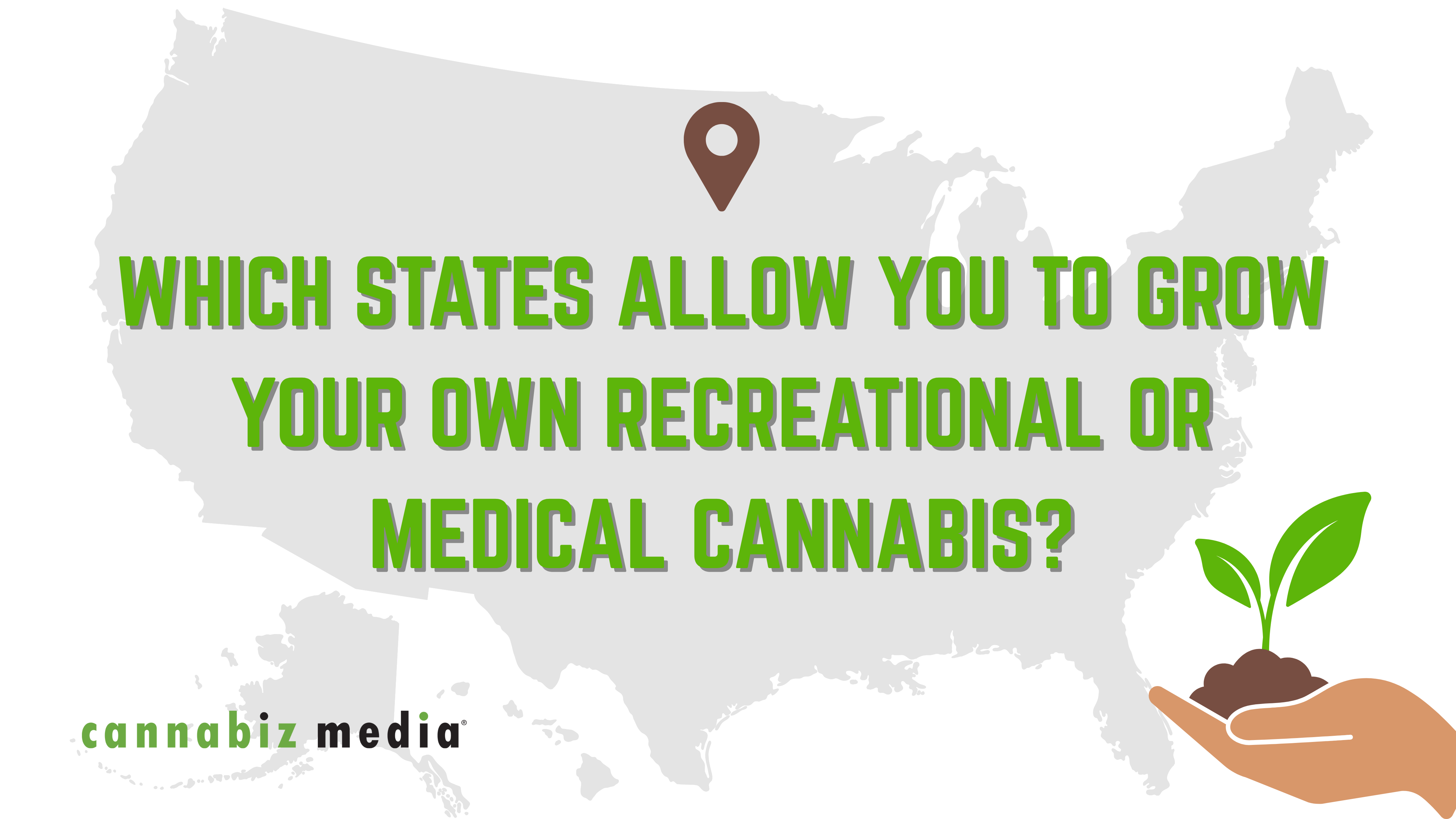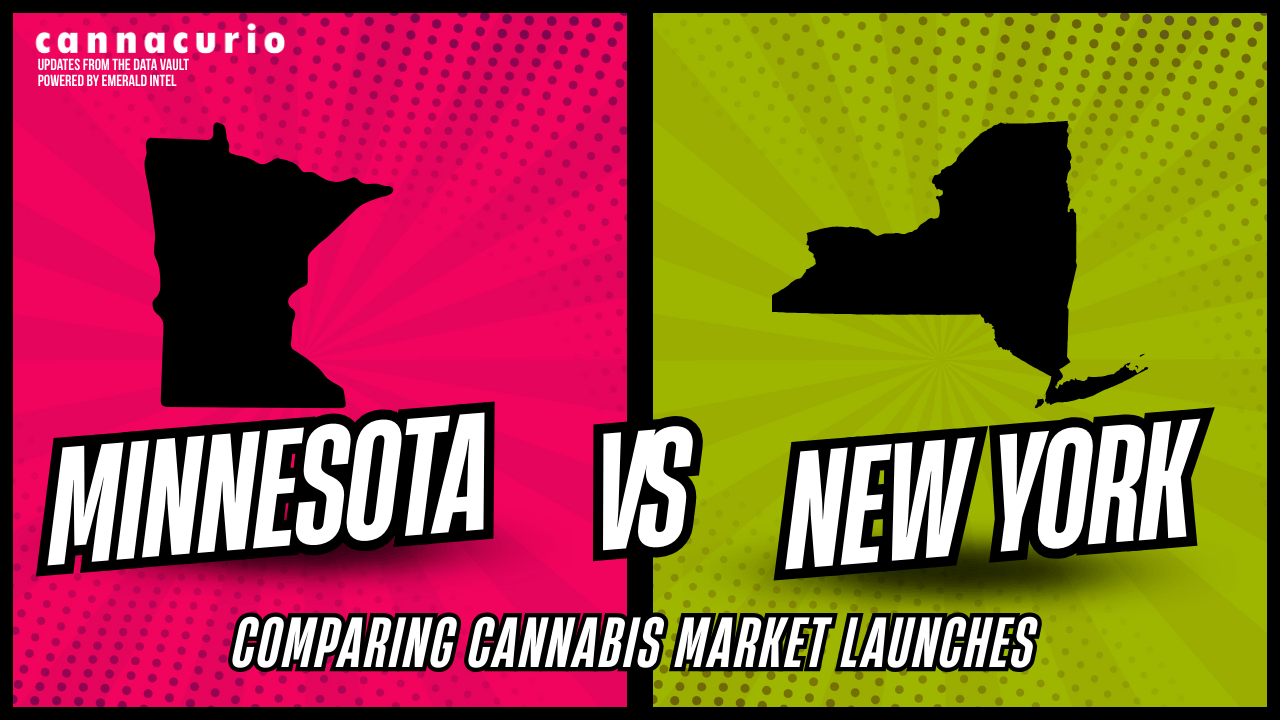
Which States Allow You to Grow Your Own Recreational or Medical Cannabis?
The legalization of cannabis in the United States has created a patchwork of laws that vary widely from state to state—and home growing is no exception. While some states have embraced the idea of residents cultivating their own cannabis plants for recreational or medical use, others place strict limits or ban home growing altogether. Today, there are only 25 markets (24 states plus Washington, D.C.) that have approved home cannabis cultivation, which represents only 61% of all legal markets in the United States.
For consumers, patients, and caregivers, understanding these differences is key to staying compliant while taking advantage of the freedom to grow. This guide breaks down where home growing is allowed, how the rules differ between medical and recreational use, and the specific plant limits set in each state.
States that Allow Home Growing
Each state’s rules are a bit different related to personal cannabis growing. Significantly, some states that have approved adult-use cannabis make no distinction between recreational and medical growing while others allow medical marijuana patients to grow more than recreational users and others only allow medical growing by individual residents.
Home Growing Allowed
States that have approved home growing of recreational or medical cannabis include:
- Alaska
- Arizona
- California
- Colorado
- Connecticut
- Maine
- Maryland
- Massachusetts
- Michigan
- Minnesota
- Missouri
- Montana
- Nevada
- New Mexico
- New York
- Ohio
- Oregon
- Rhode Island
- Vermont
- Virginia
- Washington, D.C.
Medical Home Growing Allowed
States that have approved home growing of ONLY medical cannabis include:
- Hawaii
- Illinois
- Oklahoma
- Washington
Medical or Recreational Cannabis Approved but No Home Growing Allowed
Among states that have approved cannabis programs, the following do not allow home growing for any reason:
- Alabama
- Arkansas
- Delaware
- Florida
- Iowa
- Kentucky
- Louisiana
- Mississippi
- Nebraska
- New Hampshire
- New Jersey
- North Dakota
- Pennsylvania
- Texas
- Utah
- West Virginia
No Medical, No Recreational, No Home Growing Allowed
Finally, states where cannabis is not legal in any form and thus, neither is home growing, include:
- Georgia
- Idaho
- Indiana
- Kansas
- North Carolina
- South Carolina
- South Dakota
- Tennessee
- Wisconsin
- Wyoming
State Home Growing Rules for Recreational and Medical Cannabis
At the time of this article’s writing, home growing rules across the United States focus on the number and maturity of cannabis plants in order to regulate how much cannabis individuals can cultivate at their residences. Following is a brief overview of home growing rules for all 24 states plus the District of Columbia that allow it. Please note that for each state, the grower must be an adult aged 21 or over.
For the most up-to-date home growing regulations by state, visit NORML’s State Laws page, Marijuana Policy Project’s State Policy page, or NCIA’s State-by-State Policies page.
Alaska – Medical and Recreational Growing Allowed
Up to six cannabis plants for recreational or adult use, but they can only have up to three mature (flowering) plants at one time. When multiple adults age 21 and older live in a residence, the maximum number of plants allowed at that residence is 12 and no more than six of them can be mature.
Arizona – Medical and Recreational Growing Allowed
Up to six cannabis plants for non-commercial use. When multiple adults age 21 and older live in a residence, the maximum number of plants allowed at a residence is 12 and no more than six of them can be mature.
California – Medical and Recreational Growing Allowed
Up to six plants for personal use, and no more than six plants are allowed in a residence at one time. Medical cannabis patients have higher growing maximums of up to six mature plants, twelve immature plants, or a greater amount, if deemed “reasonably necessary” by a physician.
Colorado – Medical and Recreational Growing Allowed
Up to six cannabis plants for recreational or medicinal use, but no more than three of those plants can be mature at any one time. When multiple adults age 21 and older live in a residence, the maximum number of plants allowed at a residence is 12.
Connecticut - Medical and Recreational Growing Allowed
Up to six cannabis plants for recreational or medicinal use, but no more than three of those plants can be mature at any one time. When multiple adults age 21 and older live in a residence, the maximum number of plants allowed at a residence is 12.
Hawaii – Medical Growing Allowed
Medical patients may grow up to 10 cannabis plants at one time for their own use, but they’re required to register the site with the state before growing.
Illinois – Medical Growing Allowed
Medical patients and caregivers may grow up to 5 cannabis plants at one time for their own use, and they may not be more than 5 inches tall. Recreational growing is not allowed.
Maine – Medical and Recreational Growing Allowed
Up to three mature cannabis plants for recreational or medicinal use, and have up to 12 immature plants.
Maryland – Medical and Recreational Growing Allowed
Up to two plants for personal use, and no more than two plants are allowed in a residence at one time regardless of how many adults live there. Medical cannabis patients can have up to four plants for medicinal use.
Massachusetts – Medical and Recreational Growing Allowed
Up to six cannabis plants for medical or recreational use. There is a cap of 12 plants per residence regardless of how many adults live there. Medical patients can have 12 flowering plants and 12 vegetative plants for personal use.
Michigan – Medical and Recreational Growing Allowed
Up to 12 plants at their residences. Caregivers who are registered with the state can care for up to five patients and grow a maximum of 60 plants (12 per patient).
Minnesota – Medical and Recreational Growing Allowed
Up to eight plants for personal use, with no more than 4 mature plants at a time. and no more than two plants are allowed in a residence at one time regardless of how many adults live there. Medical cannabis patients can have up to four plants for medicinal use.
Missouri – Medical and Recreational Growing Allowed
A license is required to grow cannabis at home for recreational and medical use. Once licensed, growers can have six flowering, six non-flowering, and six clones at any given time. The limit doubles if there is more than one adult in the house. Caregivers can add an additional set of 18 flowering, non-flowering, and cloned plants for use with their patients.
Montana – Medical and Recreational Growing Allowed
Up to two mature cannabis plants and have two more seedlings. If multiple adults live together, the limit is doubled to four plants and four seedlings in the household. Medical patients may grow up to four mature plants and four seedlings, with a household limit of eight of each should multiple adults live together.
Nevada – Medical and Recreational Growing Allowed
Adults who live 25 miles or more from a licensed Nevada dispensary may grow up to six plants per person or 12 per household for recreational use, regardless of how many adults live there. Medical marijuana patients may only grow cannabis at home if the closest dispensary is more than 25 miles from their home, the patient can’t travel to a dispensary, the strain or amount needed to treat the patient isn’t available at a dispensary in their county. If these conditions are met, they may grow up to 12 plants.
New Mexico – Medical and Recreational Growing Allowed
Up to 12 cannabis plants per household regardless of how many adults live there, however only six can be mature at one time. Medical marijuana patients and caregivers can get licensed to grow up to 16 cannabis plants, though only four of those plants may be mature.
New York – Medical and Recreational Growing Allowed
Six total plants per person with a total of 12 plants per household with multiple adults. Only half of those plants can be mature, however. Caregivers can grow cannabis on behalf of their medical patients but have to adhere to the same limits.
Ohio – Medical and Recreational Growing Allowed
Up to six plants per adult, with no more than 12 per household if multiple adults live there.
Oklahoma – Medical Growing Allowed
Medical cannabis patients and their caregivers may grow up to six mature cannabis plants and six seedlings at their residences, however they must have a valid license.
Oregon – Medical and Recreational Growing Allowed
Up to four cannabis plants per household for personal use, regardless of how many adults live in the household. Registered patients and caregivers may grow up to six mature plants and 12 immature plants, with those limits doubled if there are multiple patients in the household.
Rhode Island – Medical and Recreational Growing Allowed
Up to three mature plants and three immature plants for personal use per household, regardless of how many adults live there. Both medical cannabis patients and caregivers are allowed to grow a maximum of 12 plants and 12 seedlings per person but they must be tagged. Caregivers with multiple patients may grow for up to five patients totalling 24 mature and 24 immature plants.
Vermont – Medical and Recreational Growing Allowed
Each household may grow two mature cannabis plants and four immature plants, regardless of how many adults live there. Patients may cultivate up to 6 mature plants and 6 immature plants for medical use.
Virginia – Medical and Recreational Growing Allowed
Households may cultivate up to four cannabis plants regardless of how many adults live there.
Washington – Medical Growing Allowed
Only medical patients are allowed to grow cannabis with a maximum number of six plants per individual patient. With a doctor’s recommendation, a patient can increase their limit up to 15 plants.
Washington, D.C. – Medical and Recreational Growing Allowed
Up to six cannabis plants at a time for recreational use, however only three of those can be mature. The other three must be seedlings. If multiple adults live at a residence, that limit doubles to 12 total plants.
Key Takeaways about Where People Can Legally Grow Their Own Cannabis in the United States
Looking at the current state of cannabis laws, one thing is clear: home growing is gaining ground but remains tightly regulated. The majority of states that allow cultivation cap plants between 2 and 12 per household, often distinguishing between mature and immature plants. In some places, like Michigan, limits are far more generous at 12 plants per adult, while others, like Maryland and Virginia, restrict households to just two or four plants total. Medical patients typically enjoy expanded allowances, such as up to 15 plants in Washington with a doctor’s approval. These variations show how differently states balance personal freedoms with oversight of the cannabis market.
For aspiring home growers, the takeaway is simple—understanding the specific rules where you live isn’t just helpful, it’s critical. And since these laws continue to evolve, staying up-to-date with trusted resources ensures that growers remain compliant while making the most of their right to cultivate cannabis at home.
Need more insights?


.png)
